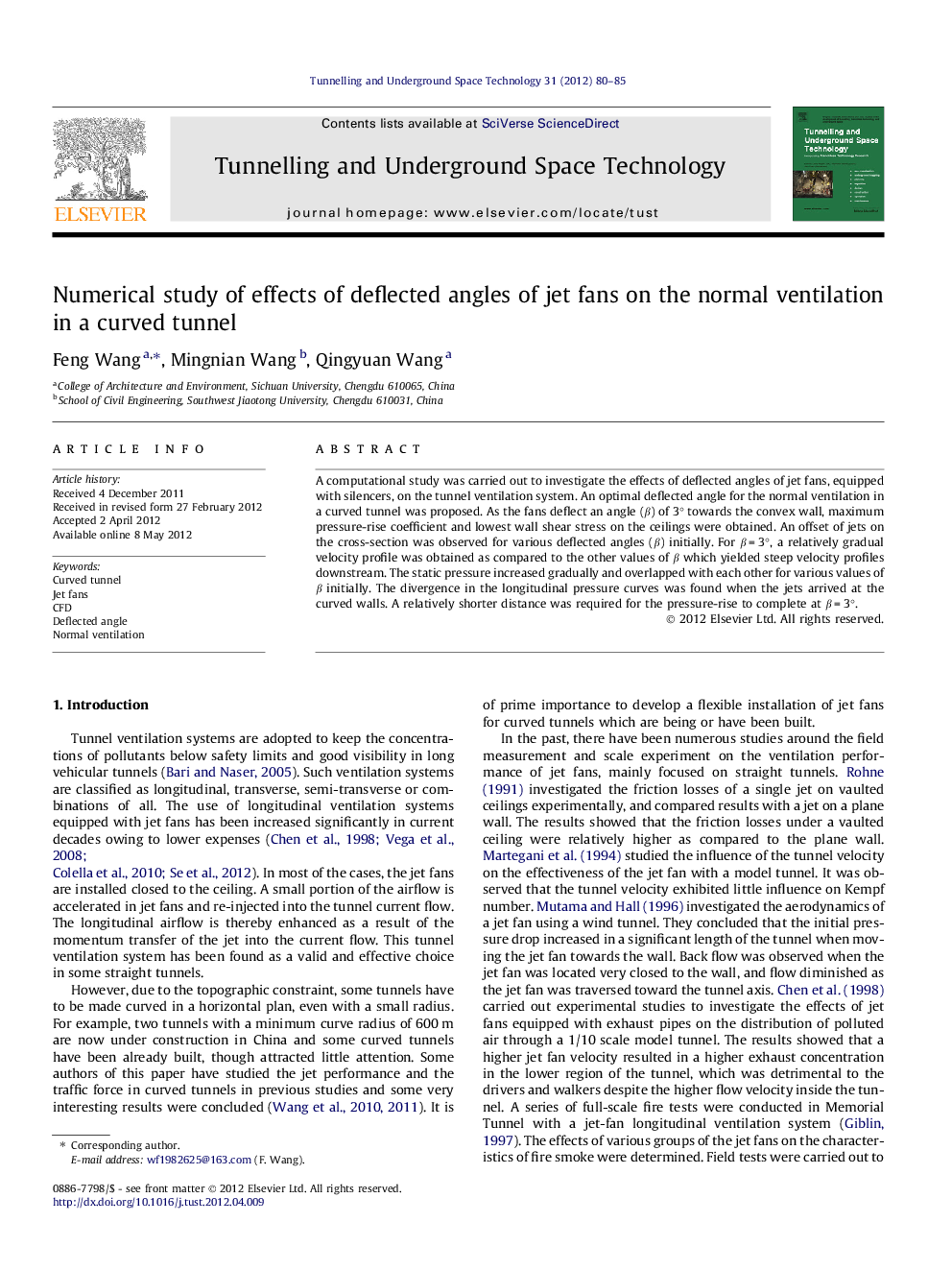| Article ID | Journal | Published Year | Pages | File Type |
|---|---|---|---|---|
| 312427 | Tunnelling and Underground Space Technology | 2012 | 6 Pages |
A computational study was carried out to investigate the effects of deflected angles of jet fans, equipped with silencers, on the tunnel ventilation system. An optimal deflected angle for the normal ventilation in a curved tunnel was proposed. As the fans deflect an angle (β) of 3° towards the convex wall, maximum pressure-rise coefficient and lowest wall shear stress on the ceilings were obtained. An offset of jets on the cross-section was observed for various deflected angles (β) initially. For β = 3°, a relatively gradual velocity profile was obtained as compared to the other values of β which yielded steep velocity profiles downstream. The static pressure increased gradually and overlapped with each other for various values of β initially. The divergence in the longitudinal pressure curves was found when the jets arrived at the curved walls. A relatively shorter distance was required for the pressure-rise to complete at β = 3°.
► A novel installation of jet fans and the detailed aerodynamic behavior of jet are investigated in a curved tunnel with a radius of 600 m. ► The RNG k–ε turbulent model is employed for the simulation. ► An optimal horizontal deflected angle (β) of 3° is concluded as a result of a lowest wall shear stress and a highest pressure-rise. ► The profiles of the velocity exhibit a relatively uniform flow for β = 3° and markedly asymmetric flows for other β.
